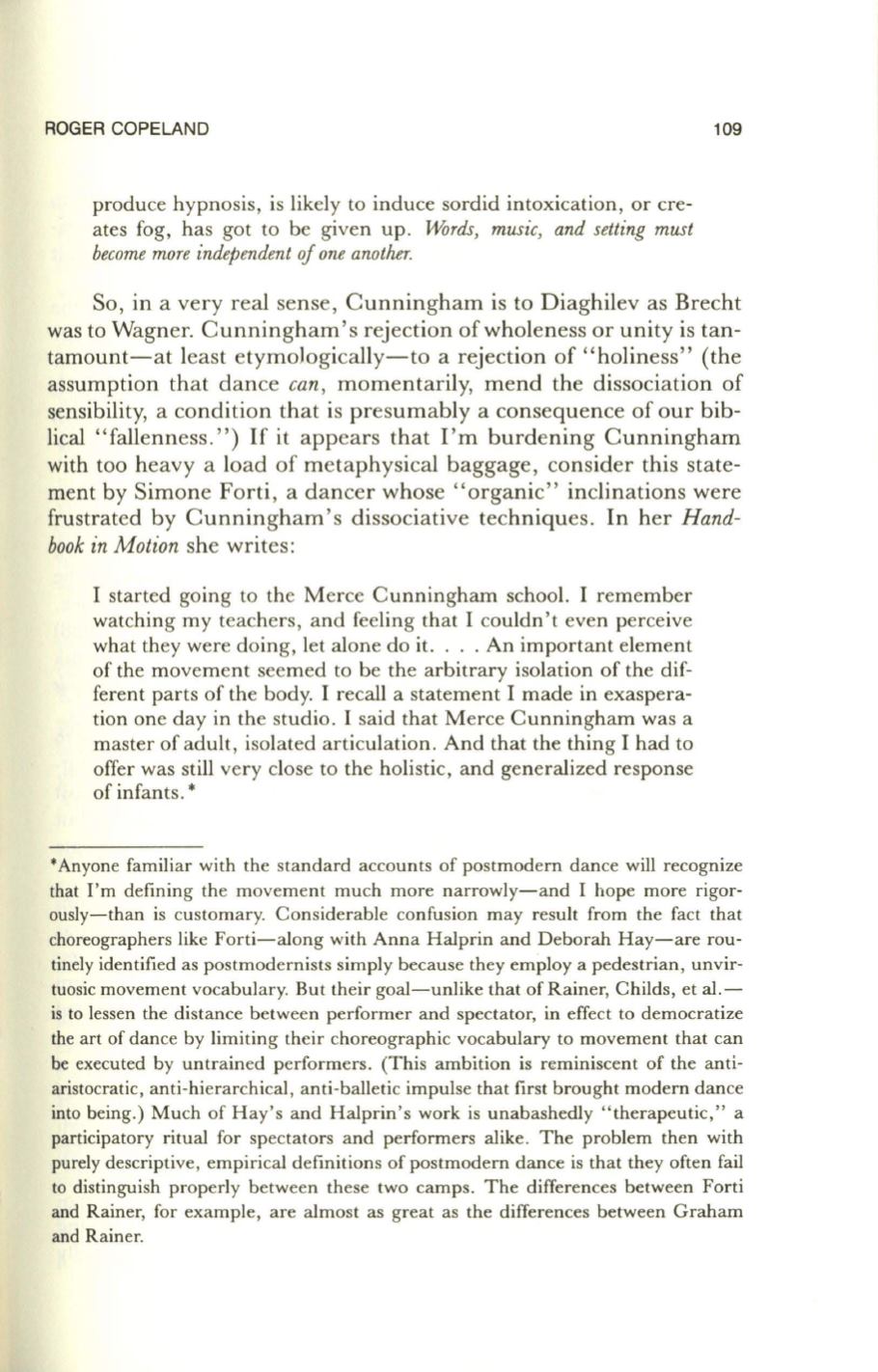
ROGER COPELAND
produce hypnosis, is likely to induce sordid intoxication, or cre–
ates fog, has got to be given up.
Uiirds, music, and setting must
become more independent of one another.
109
So, in a very real sense, Cunningham is to Diaghilev as Brecht
was to Wagner. Cunningham's rejection of wholeness or unity is tan–
tamount-at least etymologically-to a rejection of "holiness" (the
assumption that dance
can,
momentarily, mend the dissociation of
sensibility, a condition that is presumably a consequence of our bib–
lical "fallenness.")
If
it appears that I'm burdening Cunningham
with too heavy a load of metaphysical baggage, consider this state–
ment by Simone Forti, a dancer whose "organic" inclinations were
frustrated by Cunningham's dissociative techniques. In her
Hand–
book in Motion
she writes:
I started going to the Merce Cunningham schoo!. I remember
watching my teachers, and feeling that I couldn't even perceive
what they were doing, let alone do it. ... An important element
of the movement seemed to be the arbitrary isolation of the dif–
ferent parts of the body. I recall a statement I made in exaspera–
tion one day in the studio. I said that Merce Cunningham was a
master of adult, isolated articulation . And that the thing I had to
offer was still very close to the holistic, and generalized response
of infants. •
•Anyone familiar with the standard accounts of postmodern dance will recognize
that I'm defining the movement much more narrowly-and I hope more rigor–
ously-than is customary. Considerable confusion may result from the fact that
choreographers like Forti-along with Anna Halprin and Deborah Hay-are rou–
tinely identified as postmodernists simply because they employ a pedestrian, unvir–
tuosic movement vocabulary. But their goal-unlike that of Rainer, Childs, et al.–
is to lessen the distance between performer and spectator, in effect to democratize
the art of dance by limiting their choreographic vocabulary to movement that can
be executed by untrained performers. (This ambition is reminiscent of the anti–
aristocratic, anti-hierarchical, anti-balletic impulse that first brought modern dance
into being.) Much of Hay's and Halprin's work is unabashedly "therapeutic," a
participatory ritual for spectators and performers alike. The problem then with
purely descriptive, empirical definitions of postmodern dance is that they often fail
to distinguish properly between these two camps. The differences between Forti
and Rainer, for example, are almost as great as the differences between Graham
and Rainer.


